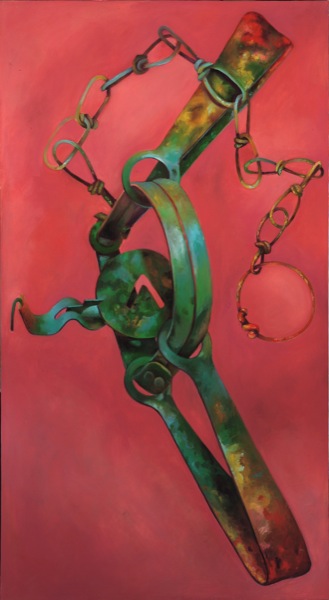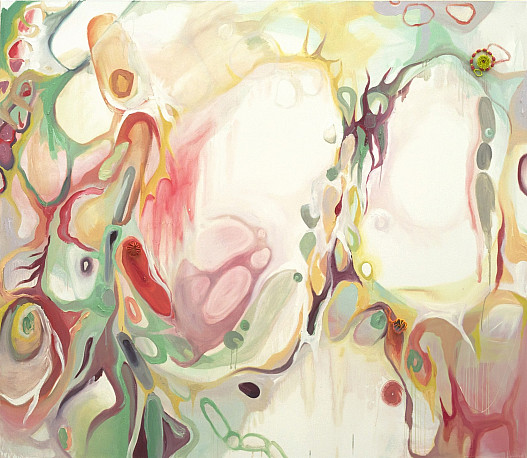Open gallery

The paintings and sculptures in “Lethal Attraction/Fatal Weapon” merge images of microbial biology and carnivorous plants with animal traps to create an environment of seductive safety out of lethal subjects. Traps fuse temptation (bait) and concealment (camouflage) to deceive their prey into willing endangerment. Their attack relies on prey taking the initiative to approach, creating an interplay of proactivity and passivity.
My representation of a foothold trap in the painting Bite is rooted in these ideas. The candy colours and sensuously textured paint serve as visual bait, allowing the dangerous object to appeal to the senses despite having the power to kill.
My small sculptures disguise themselves with rounded edges and pastel hues. They are shaped from Model Magic, a clay marketed by Crayola for children, and adorned with glitter and rhinestones. The playful materials and whimsically invented forms project a feeling of harmlessness that belies their predatory origins: traps, viruses, and flesh-eating plants.
The alluring, organic shapes of my large abstractions are also derived from the combination of traps and biological forms. The specific bacteria and viruses used in my paintings correspond to traps in that they are invisible to the unassisted eye and have lethal potential. By synthesizing physical forms, such as cellular cilia and the metal teeth of traps, my abstract paintings transform and connect seemingly unrelated subjects.
By contrasting the danger of my subjects — traps — with their innocuous appearance, I use my paintings as metaphors for sociological traps, such as ill-suited jobs or unhappy domesticity. My paintings call upon viewers to contemplate whether these types of traps lurk within their own social and psychological circumstances.















